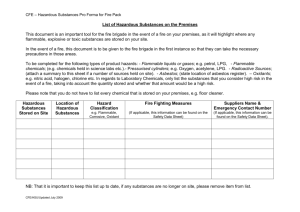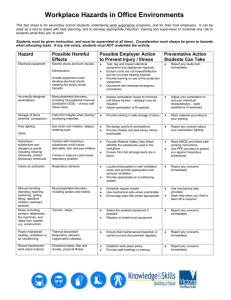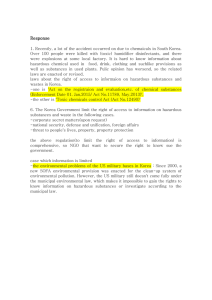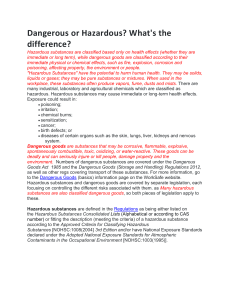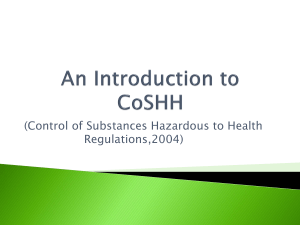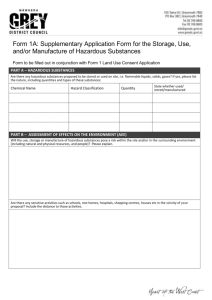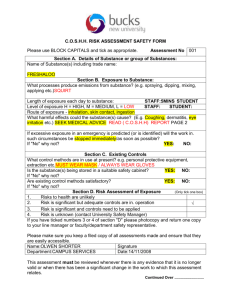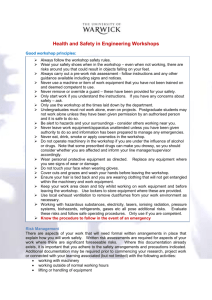Event - Risk Assessment Template
advertisement
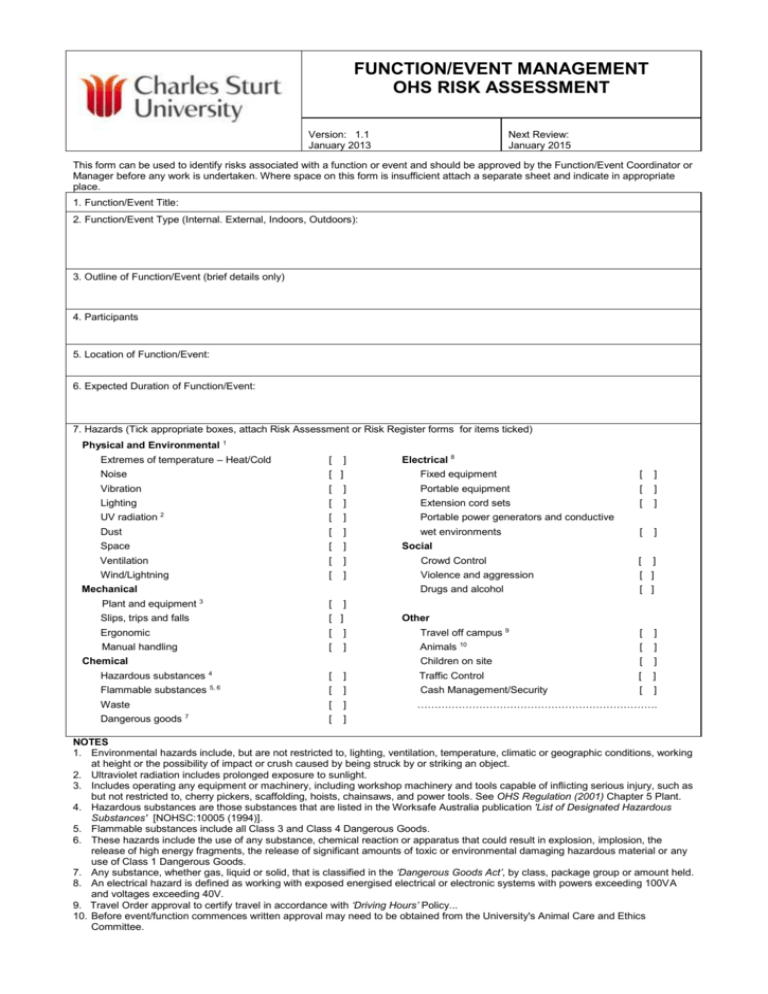
FUNCTION/EVENT MANAGEMENT OHS RISK ASSESSMENT Version: 1.1 January 2013 Next Review: January 2015 This form can be used to identify risks associated with a function or event and should be approved by the Function/Event Coordinator or Manager before any work is undertaken. Where space on this form is insufficient attach a separate sheet and indicate in appropriate place. 1. Function/Event Title: 2. Function/Event Type (Internal. External, Indoors, Outdoors): 3. Outline of Function/Event (brief details only) 4. Participants 5. Location of Function/Event: 6. Expected Duration of Function/Event: 7. Hazards (Tick appropriate boxes, attach Risk Assessment or Risk Register forms for items ticked) Physical and Environmental 1 Extremes of temperature – Heat/Cold [ Noise [ ] Fixed equipment [ ] Vibration [ ] Portable equipment [ ] Lighting [ ] Extension cord sets [ ] UV radiation 2 [ ] Portable power generators and conductive Dust [ ] [ ] Space [ ] Ventilation [ ] Crowd Control [ ] Wind/Lightning [ ] Violence and aggression [ ] Drugs and alcohol [ ] Plant and equipment 3 [ ] Slips, trips and falls [ ] Ergonomic [ ] Travel off campus 9 [ ] Manual handling [ ] Animals 10 [ ] Children on site [ ] Traffic Control [ ] Cash Management/Security [ ] ] Mechanical Chemical Hazardous substances 4 [ ] Flammable substances 5, 6 [ ] Waste [ ] Dangerous goods 7 [ ] Electrical 8 wet environments Social Other ……………………………………………………………. NOTES 1. Environmental hazards include, but are not restricted to, lighting, ventilation, temperature, climatic or geographic conditions, working at height or the possibility of impact or crush caused by being struck by or striking an object. 2. Ultraviolet radiation includes prolonged exposure to sunlight. 3. Includes operating any equipment or machinery, including workshop machinery and tools capable of inflicting serious injury, such as but not restricted to, cherry pickers, scaffolding, hoists, chainsaws, and power tools. See OHS Regulation (2001) Chapter 5 Plant. 4. Hazardous substances are those substances that are listed in the Worksafe Australia publication 'List of Designated Hazardous Substances' [NOHSC:10005 (1994)]. 5. Flammable substances include all Class 3 and Class 4 Dangerous Goods. 6. These hazards include the use of any substance, chemical reaction or apparatus that could result in explosion, implosion, the release of high energy fragments, the release of significant amounts of toxic or environmental damaging hazardous material or any use of Class 1 Dangerous Goods. 7. Any substance, whether gas, liquid or solid, that is classified in the ‘Dangerous Goods Act’, by class, package group or amount held. 8. An electrical hazard is defined as working with exposed energised electrical or electronic systems with powers exceeding 100VA and voltages exceeding 40V. 9. Travel Order approval to certify travel in accordance with ‘Driving Hours’ Policy... 10. Before event/function commences written approval may need to be obtained from the University's Animal Care and Ethics Committee. 8. Accident Conditions A. Maximum Conceivable Accident (worst outcome) B. Procedure if Accident Occurs C. Other risk management controls used to reduce the risk of incident: 9. Environmental Considerations A. Source of Pollution B. Waste Generation (describe type, quantities and method of disposal) 10. Equipment and Other Resources Required 11. Personnel Data (list ALL persons involved in the project) Name Title Training and Experience in this type of Operation 12. Signed (ALL persons involved in the event/function) ............................................................................................. ............................................................................................ ............................................................................................. ............................................................................................ ............................................................................................. ............................................................................................ ............................................................................................. ............................................................................................ ............................................................................................. ............................................................................................ 13. Supervisor’s Approval and Comments Printed Name: ....................................................................................................... ...................................................................................................................................................................................................... ...................................................................................................................................................................................................... Signed ............................................................................................................................... Date .......................................... 14. Event Organiser/ Manager's Approval and Comments ...................................................................................................................................................................................................... ...................................................................................................................................................................................................... ...................................................................................................................................................................................................... Signed ............................................................................................................................... Date ..........................................


